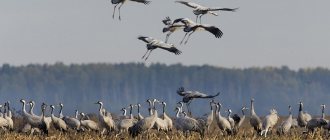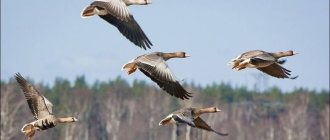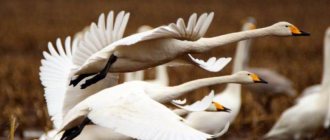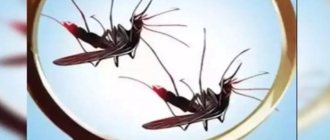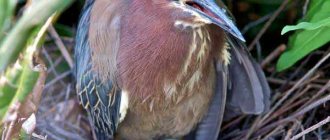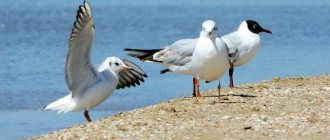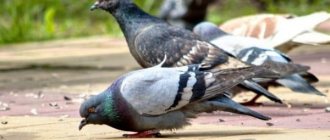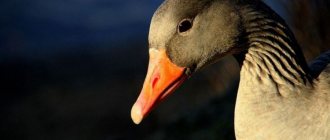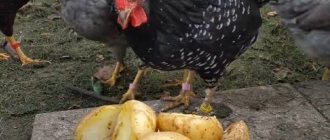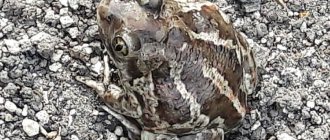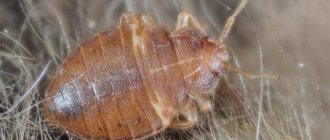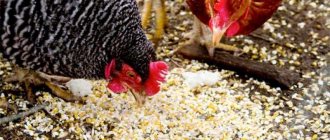Are swans migratory birds?
Almost all types of swans are classified as migratory. The only exception is the black swan, which lives in Australia, Tasmania and the New Zealand Islands. Representatives of this species lead a sedentary lifestyle and leave their usual places only in case of acute lack of food, threat from predators or pollution of the reservoir. Even in the case of forced migration, they do not fly more than a hundred kilometers from their previous habitat.
The remaining species nest in northern latitudes, and with the onset of cold weather they fly away for the winter. Pairs return to their nesting sites in the spring or at the end of winter, when the snow melts and the first ice holes appear on the water. The timing of return depends on the climatic conditions of the region and the subspecies of birds.
Where does the black swan winter?
For its nesting sites, the black-necked swan prefers to choose the southern regions of Chile and Patagonia. You can also find individual populations on the Falkland Islands. Birds prefer to wait out the winter in warmer and less windy Paraguay and southern Brazil.
Where do mute birds spend the winter?
The mute swan is one of the largest and rarest representatives of its species. Depending on their nesting area, swans fly south or stay for the winter. Migratory populations include populations nesting in the countries of Northern Europe and the Baltic, in Russia, and in the central regions of China. For the winter, birds fly to the shores of the Black and Caspian Seas, to the south of Turkey and Greece, to the islands of the Pacific Ocean.
When migrating, birds unite in large flocks numbering hundreds of individuals.
Each flock consists of several wedges led by experienced and mature birds. The flight of a swan is accompanied by the characteristic whistling sound of its wings. The birds are quite hardy and can spend many hours in the air. There are cases when swans flew more than 400 km from their resting and feeding places during the day.
Sedentary populations include swans living in Central and Southern Europe, the USA, southern Australia and New Zealand.
Where does the whooper swan winter?
For nesting sites, whooper swans have chosen the entire northern part of Eurasia - from Iceland to Sakhalin. The southernmost nesting sites reach Mongolia, Lake Ladoga, the Caspian Sea, and the northern regions of Japan. Almost all populations are migratory. Only birds living in the Baltic countries and Central Europe, as well as in the Altai and on the shores of the Caspian Sea can remain for the winter during warm and snow-free winters.
Where do whooper swans spend the winter?
- Mediterranean countries,
- Caspian coast,
- Middle Asia,
- South Asia,
- Southeast Asia.
Small northern populations often stop for the winter on Altai lakes.
Where does the little swan winter?
For nesting, small swans choose the northern latitudes of Russia. The species is conventionally divided into two subspecies: eastern and western. The nesting area and wintering place depend on which subspecies the birds belong to. Swans of the western population choose the territory from the Kola Peninsula to Taimyr itself for raising their chicks. And they winter in France, Holland, Ireland, Great Britain and Denmark.
Birds of the eastern subspecies nest in coastal areas from the Chuan lowland to the delta of the Lena River. This subspecies spends the winter in China and Japan, the countries of Southeast Asia.
Small swans return to their nesting sites also depending on their subspecies. The birds of the western subspecies arrive first: they can be seen already in early spring. The eastern subspecies returns to breeding grounds closer to mid-spring.
Ornithologists note that in the event of a long winter and high snow cover, swans flew back to warm countries or refused to breed offspring.
Nesting and breeding of swans
As we said earlier, there are many similarities in nesting and breeding of all breeds of swans. The favorite nesting places of this bird are lakes, channels overgrown with aquatic and coastal vegetation along the banks, deep forest lakes and oxbow lakes. Recently, where birds are not disturbed, they willingly nest on small ponds overgrown with banks near human habitation, and on small lakes near villages.
Swans fly to nesting sites in pairs, which form during wintering and remain for life. Each pair occupies a vast area on which they build a cozy nest. The male does not tolerate the proximity of an opponent on his nesting site, which often leads to serious fights. In general, you need to remember that a swan is a strong bird and a blow from its wing can cause serious injuries.
Read also: Description of the bird and interesting facts about swans
The female is responsible for building the nest. A few weeks after arrival, she begins to build a nest in the form of a large pile of brushwood and vegetation, using reeds, sedges, reeds, etc. The nest tray itself is lined with moss, feathers and down.
When keeping swans in captivity or semi-free conditions, the owners must help the bird prepare the nest. To do this, they pile up a pile of small brushwood or reeds 40-50 cm high and about 2 m in diameter. The depression is lined with hay on top, where the female will make a tray.
Swans often have 5-7 eggs in a clutch, but often up to 9, sometimes only 3-4. If the first clutch is taken for artificial incubation, then, as a rule, the female will make another one. She incubates on her own for 34-38 days (average 35). However, the male is always nearby and guards the nesting area.
The chicks that are born, barely dry, can immediately get food, but the brood stays with their parents for a long time. They often go together for the winter.
Swans feed on both aquatic and terrestrial vegetation and animal food. They prefer green parts of aquatic plants, rhizomes and small aquatic invertebrates. Swans obtain food in shallow water from the bottom, plunging their necks deep, but cannot feed at depth.
In captivity in winter, feeding swans is not particularly difficult and is not much different from feeding other domestic waterfowl. These are concentrates - oats, barley, wheat, bran, white bread (about 700 g in total); animal food - small fish, meat and bone or fish meal, any root vegetables (carrots, beets, etc.) in an amount of 300 g. Birds also need fish oil, especially young and growing birds. If swans live in a closed yard and swim little, the significant weight of the bird puts a lot of pressure on its legs, which are not very suitable for walking on land, so fish oil must also be present in their diet. We must not forget about the regular supply of mineral supplements.
If young birds are fed by hand, they very quickly get used to it and become completely tame. Black swans are especially easy to tame. I have a couple of these swans living in my yard. Almost every day I pampered them with a treat - I gave them a white loaf straight from my hands, and today these now adult birds literally do not allow them to walk through the enclosure: they cackle affectionately and dance, climb under their feet and with their beaks into their pockets, where they hope to find a treat.
If strangers enter the enclosure, then the swans do not just ask for food, but always, like real artists, perform their favorite dance - frequent bows, their long necks bend gracefully, while the graceful birds make pleasant, not harsh, sounds, like those of other feathered relatives , sounds. Sometimes a pair of swans touch their red beaks and necks while dancing. What is not a symbol of swan fidelity!
The swan is a wonderful bird. Watching and caring for him is a real pleasure for lovers. But still, it is most beautiful and organic in its natural environment, against the backdrop of a spacious reservoir.
Read other articles on this topic here.
Migration Features
Spring migration
Regardless of where birds fly in winter, what species they belong to and where they nest, spring migration is usually very intense, and in a short time the birds return to their nesting places. Each pair strives to occupy the best site and larger territory, and begin to build a nest earlier. Swans are more aggressive in the spring - tired from a tiring flight, they often fight with their neighbors for their territory and nest.
The most pronounced and intense migration is observed in the northern regions, since the summer there is very short and the time for hatching chicks is limited. Another reason is the rapid growth of plants and the ability to spend a lot of time searching for food. This is facilitated by the long northern daylight hours.
The peak of spring migration occurs in late February and early March.
Autumn migration
In autumn, migration occurs less noticeably. Birds are more reluctant to fly, form flocks and spend more time traveling to their wintering grounds. Birds make more stops to feed and rest. The answer is simple: in autumn flocks there are many young birds that cannot handle long flights. The only exceptions are small swans. They tend to quickly leave cold nesting regions. Before the autumn migration, birds spend a lot of time in training flights so that the young become stronger and learn to use air currents. The training flight distance is several tens of kilometers. Most often, birds describe a circle above the resting and parking area of the entire flock.
Where and how do swans build nests
Swans are one of the most striking and fascinating birds. They rightfully bear the title of kings among birds, because even eagles can envy their grace and elegance. These beautiful waterfowl are of great interest not only to ornithologists, but also to ordinary people, because everyone likes to contemplate their imposing and smooth movements across picturesque lakes. In our article we will look at the main stages of the life cycle of swans, starting with the mating season and nest construction and ending with laying, incubating eggs and further caring for the offspring. So, let's figure it out.
Where do birds go for the winter? Funny myths from the past
Just some 200 years ago, people could not even imagine that birds would travel thousands of kilometers to spend the winter in warmth and comfort. What kind of inventions did ornithology (the science of birds) know?
Aristotle himself believed that many birds, including swallows and kites, hibernate during the winter, and some even transform into another species. According to the philosopher, the redstart, which he observed only in the summer, in the fall turns into a robin, which the scientist had to see only in the winter.
Many scientists listened to the fantastic versions of Aristotle, who lived before our era. Even a couple of centuries ago, they were sure that swallows and swifts hibernate at the bottom of lakes, immersed in silt. There were also those who considered the birds too fragile to cross seas and oceans, so they “sent” them to the moon to spend the winter! Europeans and North Americans believed that small birds traveled on the backs of large ones.
Description of the species
The description of the life of swans is of increased interest, because such grace and beauty is no longer found among their waterfowl counterparts. The birds are large in size, the weight of an adult reaches 15 kg, length from 110 to 180 cm, and a wingspan of about two meters. In nature, there are varieties with snow-white, gray and black plumage.
Swans are distinguished by their long curved neck, thanks to which they look for food in coastal areas of water bodies. They have developed muscles, so they cover long distances during seasonal flights, but due to their short legs, they waddle on land.
Birds do not have sexual dimorphism; therefore, it is almost impossible to distinguish a female from a male by external signs.
Sensational discovery!
However, on May 21, 1822, a sensation spread around the world! Near Mecklenburg , an 80-centimeter arrow was found in the body of a dead stork, piercing the bird’s neck. The arrow was not from here and belonged to one of the African tribes . A desperate brave man with an arrow in his throat managed to overcome the entire migration route, returning home from the equatorial wintering grounds.
This story shed light on the mysterious disappearance of birds in winter. A stuffed specimen of the famous arrow stork can still be seen in the zoological collection of the University of Rostock.
Repeated reports of white storks with African arrows in their bodies helped make the discovery: European birds winter in equatorial Africa. However, ringing, which naturalists began to carry out since the 90s of the 19th century, made it possible to accurately determine the places where birds fly to for the winter.
Interesting Facts
The ability of swans to form a pair for life is admirable, but often after the death of a partner, the second begins to look for a new pair. Although birds painfully experience the loss of their soulmate.
Read also: How to cut a swan from a tire: step-by-step instructions and master class correctly with detailed photos
Many interesting facts about the life of swans have been recorded:
- The color of the bird depends on its habitat; in the southern regions the plumage is gray or yellowish; the further north you go, the whiter the color becomes.
- Regardless of the type of bird, babies are always born with a gray down color; only after three years do they receive adult colors
- In black swans, about 20% of hatched chicks are the result of infidelity with other males.
- Young females remain in the family with their parents for a long time, but if they find a partner, then without the approval of the leader father they will not be able to fly away with him.
- The flock does not abandon a sick swan, they wait until it gets better.
- Swans belonging to the royal family swim along the River Thames. A similar law was issued in the 12th century, but is still in effect.
Birds with a regal bearing inspired creative people to write poems, poetry and music. The constellation Cygnus shines in the sky, and at wedding celebrations the newlyweds are wished swan-like fidelity.
From the life of a young swan - on video:
Noticed a mistake? Select it and press Ctrl+Enter to let us know.
Where do birds fly for the winter?
The founder of ringing is believed to have been the Danish science teacher Hans Mortensen . The man hung light aluminum rings on the swallows that were hanging around the school. A year has passed and the birds are back! This was the first attempt to mark birds.
By studying the migration of swallows using banding, scientists have determined that these little daredevils reach South Africa. Transcarpathian swallows , for example, cross the Sahara and spend the winter in Central Africa. It was also chosen by Ukrainian nightingales . These are complete migrants.
Swan habitat
White individuals prefer to settle in areas where the climate is temperate and in tropical areas. They belong to waterfowl, and therefore live mainly in various types of water bodies. They feed there, in shallow water, on various mollusks, small crustaceans, fish and vegetation.
Most bird species live in the northern hemisphere, the black species lives in Australia and New Zealand. The black-necked swan, or as it is otherwise called the South American swan, is found in fresh waters in the south of South America, where it nested.
Black-necked birds do not live in the following countries:
- Asia;
- Central America;
- Northern regions of South America;
- Africa.
Zoologists note that the whooper species lives on the Eurasian continent, mainly in its northern part. In countries such as Iceland, Scotland, a number of Scandinavian countries, also in the territory from Kamchatka to eastern Sakhalin, on the Black, White and Baltic seas.
The whooper occupies territory mainly on the water. Prefers large lakes that are overgrown with grass, reeds and reeds along the edges of the banks, or on remote lakes in the forest. It happens that they are located on the sea coast in areas overgrown with reeds.
They settle in bodies of water near places where people live. If swans live close to people, they should not be disturbed.
The mute lives further south than the whooper swan. Occupies the southern and central European zone, as well as most of Asia. Mute swans, like other types of swans, are located in remote estuaries and overgrown lakes. Swans are also spotted in the swamps.
At what altitude do birds migrate?
Most songbirds migrate at altitudes of 500–2000 meters. And this is the height of 2-4 Eiffel Towers. Some winged birds rise almost 7 kilometers above the ground. Swans were observed at a distance of 8 kilometers from the ground, and bar-headed geese were observed at an altitude of 9 kilometers above the ground .
Small birds can fly continuously for 70–90 hours, flying four thousand kilometers. Their flight speed is 30 km/h. Large birds migrate at a speed of 80 km/h.
Reviews from the network
A very important condition for keeping swans in winter is the air temperature. Both cold and too high temperatures can have a negative impact on the health of swans. It is very important to determine the optimal relative humidity. High humidity can cause loss of appetite in swans and also lead to illness. Too dry air will lead to poor heat transfer, the bird will always feel thirsty.
The poultry house must have good ventilation. Otherwise, the air will be very polluted, appetite will decrease, and various respiratory diseases are possible. You also need to follow the recommended planting density - plant 1 adult swan per 1 square meter of floor area. The space for one bird should be fenced off with a net, thus creating unique sections.
There should be a pen located directly next to the premises. In warm weather, swans are walked in it. The poultry house for keeping swans in the winter must have dry and clean bedding. You can use peat, straw, shavings, sawdust, and husks as it. Slaked lime is laid under the bedding, based on the calculation of 0.5-1 kilogram per 1 square meter.
How do birds find their way when migrating?
There is still no clear answer to this. Scientists believe that the behavior of birds is guided primarily by instinct . To test this hypothesis, the Dutch scientist A. Perdek conducted an experiment with starlings.
Having ringed several thousand birds, he transported them from the Netherlands to Switzerland and released them into the wild. Young birds, migrating for the first time in their lives, went to the southwest. Thanks to instinct, the starlings managed to choose the right direction. But in the end they deviated from the course and ended up significantly south of the wintering place. The young birds had no choice but to spend the winter in Spain and the south of France. And adult starlings, who had experience of seasonal flights, showed that they have sniper navigation and are perfectly oriented in space. The birds immediately laid out a new route to the west and northwest, easily reaching their usual wintering place - Great Britain.
, the key reference point for birds is the Sun. Birds are able to see polarized light, so they can easily find their way even during bad weather.
Gustav Kramer, who observed starlings in captivity in the 1950s, decided to test the orientation of birds by the Sun. With the onset of spring, the birds flocked to the northeast. Even when their cells were rotated in different directions, the direction did not change. Then the scientist changed the location of the mirror system so that the sun's rays fell from the opposite side. And - a miracle! — the starlings changed direction to the opposite.
However, Kramer's new experiments, when the artificial star did not move, showed that in the fall the birds are still restless and tend towards their usual wintering places. This proved that birds have an internal clock , by which they determine the time of day and year.
Of course, when migrating, birds are also guided by ground landmarks - the location of mountains, valleys, river beds. This is how they find familiar places for food and rest.
At night, birds look for their way by the stars . This hypothesis was first tested by Franz and Eleanor Sauer. When scientists brought the birds to the planetarium and turned on a star map of the autumn sky, the birds flew to the southwest. And when the star map was changed to spring, the birds quickly turned to the northeast. While you are surfing the Internet at home, the birds, while still in the nest, are studying a map of the starry sky!
What if the sky is covered with clouds at night? Another landmark for winged travelers is magnetic fields . The Earth is a giant magnet with magnetic field lines stretching between the South and North Poles. The bird's brain contains a special organ that is capable of recording these fields. Iron particles in the beak also help the bird determine its location relative to the Earth's magnetic field.
A large number of birds (geese, swans) learn the route of seasonal flights, migrating with experienced relatives. But the cuckoo has to find its way on its own, thanks to its innate instincts.
How swans build a nest
After the male chooses the site of the future nest, he begins collecting building material. To do this, he can fly many kilometers in search of that very branch that, in his opinion, will be suitable for the nest. The female diligently and carefully places twig after twig in its proper place, gradually building the cup-shaped shape of a swan’s house.
On average, a swan family is capable of laying from 4 to 8 eggs in one season. Unfortunately, it often happens that swans leave their nest. Such a spontaneous decision can be caused by many reasons, including the death of one of the parents.
But in most cases, the female successfully withstands the period of incubation of eggs and after a certain period of time, beautiful swans are born. The eggs themselves have a characteristic green-gray color, less often light brown. The shell is distinguished by a certain surface roughness. In size, such an egg exceeds 10 centimeters in length and 6 centimeters in diameter.
Why do birds migrate?
The reason is not only frost and lack of food. With the onset of cold weather, many birds unjustifiably fly further south than necessary for a comfortable wintering. But why? Scientists are inclined to believe that this is a relic of the past, a genetic memory that pushes birds south, as in the distant times of the Ice Age.
Why don't birds stay in warm regions forever? In a foreign land, many dangers await them: predators, rainy seasons, droughts and poachers. If European birds had remained in Africa, a fierce struggle for water, food, and living areas would have begun. It would be difficult for migratory birds to compete with resident birds. In the north, there is a favorable climate for nesting, more food and fewer dangerous predators.
Hatching eggs
Hatching of the laid clutch lasts from 33 to 40 days. Throughout this entire time, the faithful male protects his swan and, if necessary, warns of possible danger. If the birds are disturbed, they quickly cover the masonry with down and branches to hide it from the predator.
The parents themselves break away from their homes and hover over the nest, waiting to see if the stranger will attack or if the alarm turned out to be false. Having carefully and carefully examined the territory surrounding the clutch, the male and female can return to the nest.
Migratory birds
Migratory birds migrating for the winter include:
- wagtail,
- redstart,
- swallows,
- robins,
- cuckoos,
- starlings,
- oriole,
- swifts,
- lapwings,
- finches,
- larks,
- song thrushes,
- forest horses,
- warblers - chiffchaffs and others.
The reason for their migration is the lack of food, the disappearance in winter of caterpillars, larvae and other insects that form the basis of the bird's diet. Of the forest birds, about half will fly away for the winter, but from the tundra or taiga, from wetlands, almost all species of feathered inhabitants will go to warm wintering places.
When choosing where to fly for the winter, most species will prefer familiar conditions. Forest dwellers will choose forest edges for wintering, meadow dwellers will choose meadows or fields, steppe dwellers will find a new place of residence in the steppes. Here they will find familiar food and surroundings similar to those in their homeland.
When choosing where to fly, birds will focus both on the final destination - the place of future wintering, and on the opportunity to feed themselves during the long journey. Therefore, the route of migratory birds does not run in a straight line to the wintering place, but contains various bends, turns and stops where they rest and feed. Along their flight route, they will also stick to familiar terrain - forests, fields, steppes. If the path runs through deserts - the Karakum, the Sahara, the Libyan Desert - migrating species tend to fly through these places as quickly as possible.
Birds are guided by an unmistakable instinct - sometimes young animals, who do not know the way, fly away earlier than more experienced individuals. During the flight, birds exchange signals similar to echoes. Some species fly during the day, while others prefer to travel at night and rest during the day. Usually, females and males travel at the same time, with the exception of finches (their females fly away earlier for the winter) and storks (their males fly to their permanent habitats earlier than the females).
It is those species of birds that feed on insects that are the first to leave their nests before spring. Swallows and swifts set off as soon as autumn approaches, in August, at the first cold snap at night. The last to fly to their wintering places are swans, ducks and geese: this happens when the temperature drops below zero, the rivers are covered with a crust of ice and food production becomes impossible.
Mating season
Swans are unique and unrepeatable birds that also know how to be faithful. So, they choose a mate only once in their entire life and then never change their partner.
The mating season of these birds itself begins literally the next week after arriving from warm regions, that is, at the end of March or beginning of April, when the temperature outside is still quite cold.
Swans are rather slow birds in their sexual maturation. Thus, birds of this category acquire the ability to reproduce only 4 years from the moment of birth.
The selection of a pair occurs within a week after arrival. At this time, the swans arrange a real waltz on the water, dancing and flying from place to place. In such a graceful dance, relationships between females and males are established.
After the dance, their mating games begin. During this period, males and females come to land, where the swan walks importantly and proudly back and forth in front of the winch, stretching its neck, periodically flapping its wide wings, while making screaming sounds.
Read also: What does a swan eat in the wild and at home?
After some time, the female flies to a new place, as if checking the seriousness of her gentleman’s intentions. The male flies behind and repeats his ritual of proud pacing.
Then, when the birds have already decided that they will become a pair for life, the female begins to build a nest.
Migration routes of migratory birds
Ducks go to the Balkans, swans fly to Greece and the UK.
Starlings head to the Mediterranean coast. Wagtails fly to Africa or Asia; they also often choose India for wintering. Blackbirds like to winter in France, Spain, Portugal, and Italy. The cranes go further - to Egypt, to the Nile River. The Dubrovnik Bunting flies from the Moscow River and Oka River through Siberia to South China. To determine where birds fly for the winter, ornithologists use the ringing method. It is known that some waterfowl winter in Russia. A white owl from the tundra flies to the Central Russian forest-steppe , seagulls will go to the Sea of Azov or to the south of the Caspian Sea. Many migratory birds choose Turkmenistan, Kyrgyzstan, and Azerbaijan for wintering - large concentrations of finches, ducks, and geese are observed here during the wintering period, and reserves are specially created in these regions.
There is a unique case - Arctic quacks fly to Antarctica for the winter, thanks to the availability of food, which is characteristic of cold Antarctic water.
What do they eat in natural conditions?
Thanks to their developed muscles, birds confidently stay on the surface of the water and dive. What swans eat determines their habitat conditions, which determine the abundance of vegetation in their diet. They prefer to search for food in shallow water and eat plants, worms, insects and amphibians. They submerge their necks under water and capture suitable food in the coastal zone and between aquatic vegetation.
Under natural conditions, the diet includes:
- young willow leaves
- aquatic and coastal vegetation
- small fish
Feeding occurs like this: the birds dip their beaks into liquid sludge, filtering the liquid, and with their tongue they separate the food from unnecessary solid particles.
When to feed a swan
They feed sick or wounded individuals, especially in severe frosts below -15 degrees.
Symptoms of hypothermia include an icy neck of a swan; it sits on the icy surface of a pond, hiding its head under its wing.
A healthy bird is not afraid of freezing; it has accumulated subcutaneous fat by winter.
An injured swan is given food on ice or given in a large basin.
In the frosty season they feed with grains, and in warm weather - with chopped beet tops, cabbage and carrot leaves, corn cobs and boiled potatoes.
Recommendations from experts regarding winter feeding
What do swans eat in winter if the bird seems to be starving? If there is no food in the reservoirs, a healthy bird will not stay there for more than three days. If there is no food or it runs out, the swans fly away in search of food elsewhere.
Zoologists' recommendations on what to give to birds:
- wheat grains
- barley or millet
- oatmeal or oat grains
Before feeding, cereal crops should be prepared:
- grain is poured into a container
- pour hot water on top
- leave to brew for several hours in a warm place
If you want to provide the bird with fortified feed, grains are sprouted:
- oats or wheat are poured into a wide basin
- pour cold water so that it covers the grain evenly
- leave in a warm place until sprouts appear
Sprouted or steamed grains are better absorbed in the body; they are not capable of causing injury to the esophagus.
Nutrition in the aquatic environment
The bird eats duckweed, roots and green matter of vegetation, aquatic burros and mollusks in the water. When diving, only half of the body is visible above the water, and at this time the individual is trying to catch passing fish or frogs.
The diet contains food of plant and animal origin:
- larvae and crustaceans
- roots of aquatic plants
- tree leaves, cereal seeds, berries
The chicks do not yet know how to catch fish skillfully, so they catch daphnia, snails and small crustaceans in shallow water.
What to eat on land
Swans move awkwardly on land, but sometimes they go ashore to feast on young grass, look for worms, larvae, and catch lizards. Birds love grain - wheat or corn, and for digestion they eat fine gravel and shells. Chicks also need protein food, so they eat insects and snails along with their parents.
During molting and stress, the bird's appetite increases and it can eat up to a quarter of its own body weight. Typically, an adult needs 4 kg of green mass per day.
How to feed swans living near humans
Swans are admired in zoos, nature reserves and protected areas. For convenience, keepers build houses on the water or make straw flooring on the shore so that the feathered pets can rest. Birds should not be fed bread; the best option would be slightly steamed grains.
There are people who like to feed swans at the zoo, but instead of buns you can buy special feed in the store. It is enough for waterfowl to saturate small animals and vegetation in the reservoir; only sick or injured birds experience hunger.
The nuances of feeding at home
Waterfowl are the best eaters of vegetation. Large feeders are placed directly on the ground, mixed feed or dry food is poured.
In winter, vitamin and mineral supplements are administered.
From grains, grains of wheat, barley or millet are steamed, boiled vegetables from the garden are given, and chopped herbs are also provided.
The food is placed in a wide container and filled to the brim with water.
A special resting place is set up nearby, that is, a thick bedding of straw up to 40 cm high is laid.
Poultry can be given meat waste, meat and eggs, which successfully replace food of animal origin. Young animals eat minced fish and meat, millet porridge and hard-boiled eggs.
Summer food for adults
In warm weather, replace vegetables in the diet with green chopped vegetables. If there is a body of water nearby, the birds are released to feed freely.
For each adult individual, an approximate diet is calculated:
- 250 g wheat or oats
- 230 g minced meat
- 500 g of green mass
- 20 g bone meal
Winter menu
In frosty weather it is impossible to provide swans with green vegetation, so the portion of grain is increased. They reduce the output of minced meat, because under natural conditions fish are not available at this time, and the worms are hidden deep underground.
Diet in winter:
- 700 g bran or millet
- 20 g minced meat
- 300 g boiled vegetables
- 20 g bone meal
Feed preparation
It is advisable to provide the bird with water and, when giving food, feed a lot of chopped greens. In summer, the diet is enriched with finely chopped carrots, cabbage, lettuce and mown grass; in winter, they are fed with grass meal. Swans eat sprouted cereals, boiled peas, minced meat, sliced cucumbers, eggs, bran and bone meal.
Preparation of special feed:
- chop vegetables, roots and herbs
- All components are mixed in a basin
- pour water until it becomes a semi-liquid mixture
How to feed a sick swan
If salmonellosis is suspected, chicks are fed fermented milk products and water with the addition of potassium permanganate. In order for children to be able to swallow the medicine, it must be thoroughly mixed with minced meat.
Sometimes, instead of pebbles, the bird swallows fishing weights, which rub against each other in the stomach, and lead particles enter the intestines and blood. Lead poisoning begins, watery diarrhea appears, and the bird becomes noticeably weaker. Solder with water and honey in equal proportions or glucose solution.
Airspeed
The flight speed of birds during migration is relatively low. One of the slowest is the quail - it flies at a speed of approximately 40 km/h ; the black swift is among the fastest (160 km/h). But during the flight, birds can spend a lot of time on stops, and in general, their long journeys - for example, to Africa - can last for 2 - 4 months. The speed of spring migration when migrating species return is higher - in spring birds return home faster than in winter they fly to wintering grounds.
Sources:
https://nalugah.ru/pticevodstvo/lebedi/perelyotnaya-li-ptica-lebed-gde-zimuyut-i-kuda-uletayut.html https://pustunchik.ua/online-school/biology/zoology/kudy-vidlitaiut -ptakhy-na-zymu-i-yak-povertaiutsya-nazad https://zoolog.guru/pticy/kuda-uletayut-pticy-na-zimu-i-mesta-kuda-oni-letyat-do-vesny.html
